Singapore’s International Trees
Did you know that the Bougainvillea, so identifiable on Singapore’s overhead bridges and road verges, is actually native to Brazil?
In fact, many roadside trees that we see, walk past, and find shade under daily, originated from other countries, some as far as Ecuador in Central America! This was the result of a global search, launched in the 1980s to find the right sorts of plants to grow on our local soil.
Some 30 odd years later, these ‘international trees’ have so taken root in Singapore that we cannot imagine our streetscape without them. We uncover some of these ‘naturalised citizens’ here.
Australia
1. Bottlebrush Tree
Considered a large shrub to a small tree, it can grow to 7 to 8 m tall, with a brownish grey bark that gets more fissured with age. While it prefers well-drained, sandy loam soils, it can also survive in poor soils with infrequent watering.
2. Golden Myrtle
Another plant that comes originally from down under, specifically Cairns in Australia, the Golden Myrtle (Xanthostemon chrysanthus) grows to a height of between 12 to 20 m, and up to 40 m in its native environment. It grows well in the sun and can tolerate dry conditions, producing bright-yellow flowers arranged in large, dense, rounded heads that attract pollinators like bees.
Its fruits are capsules that turn from green to brown upon maturation. When ripe, its seeds are dispersed by explosive action. Compact, drought tolerant and low maintenance, it is a popular plant, particularly grown on small road verges.
In its native Eastern Australia, the Australian Flame Tree (Brachychiton acerifolius) can grow up to 35 m or more in height, but locally it typically reaches heights of 10 to 15 m. It has a conical crown with smooth and glossy leaves that vary in shape, even on the same plant.
It produces striking scarlet-red flowers that are bell-shaped and petal-less. It blooms with varying intensity and the whole tree can be spectacularly covered with flowers, usually after a prolonged period of dryness.
Central and South America
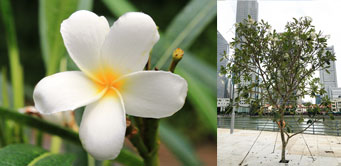
The tree grows to about 5 to 8 m in height, with a short trunk, numerous branches with a grey, knobby bark. Its leaves are strap-like and are clustered at the end of the branches.
2. Trumpet Tree
Sometimes known as the Singapore sakura, the flowers of the Trumpet Tree (Tabebuia rosea) are some of the prettiest blooms found on our shores, particularly during the months of April and August. After a prolonged dry spell, the tree tends to flower, carpeting the streets with pink petals a few weeks later.
The trumpet-shaped flowers are large and showy, while the conical tree can grow to more than 30 m in height. Its seeds have winged features and are dispersed by the way. It is a native of Central and South America, stretching from Mexico to Venezuela and Ecuador.
1. Flame of the Forest
Originally from Madagascar but now commonly found in Singapore, the Flame-of-the-forest (Delonix regia) is a large tree that can reach 20 m in height. It bright red and orange flowers are arranged in bunches, with its prominent uppermost petal streaked crimson with an eye-catching yellow centre.
Its broad umbrella-shaped crown provides much-needed shade in sunny Singapore, and in other tropical cities around the world. It produces fruit pods that are green and flexible, turning reddish brown or black, woody and curved at maturity. The pod splits open to release the seeds.
2. Banjo Fig
A small to medium-sized tree, it can grow up to 12 m in height when grown in ground, but can reach to 30 m in its native habitat. While its crown is spare in young trees, it grows more dense and rounded in matured trees. It has glossy dark green leathery large leaves with prominent yellowish veins on the upper surface.
1. Golden Shower
The national tree of Thailand, the Golden Shower (Cassia fistula) is from India, Sri Lanka and tropical Asia. The tree grows easily and can reach to about 18 m in height, producing large, brilliant golden-yellow flowers that grow in hanging clusters. These attract butterflies and other insects, important for its pollination.
A medium-sized tree with an irregular crown, it sheds its leaves every eight to 10 months, especially after flowering. Nearly all parts of the plant have medicinal properties and can be used to treat ailments such as wounds, colds and pimples! Its timber can be used to make cabinets, wheels, posts and as firewood.
A small tree that grow to between 6 and 10 m in height, the Hong Kong Orchid (Bauhinia x blakeana) is suitable to grow in gardens, parks and other green spaces. Its leaves, light green in colour, are shaped like a butterfly’s wings while its deep-pink flowers are large, measuring about 15 cm across, and showy, attracting sunbirds to its five to six stamens.
This is the flower that appears on the Hong Kong’s flag, hence its common name. While its flower resembles an orchid, the tree is a legume, a member of the bean family. The tree grows well in fertile, well-drained, acidic soils.
Native species may not put up such spectacular floral displays as some of the introduced species but are no less important. Native plants are a critical part of our ecosystems, supporting our native biodiversity and are key to our habitat enhancement and species recovery efforts. They have also been used culturally for traditional and commercial purpose for food, medicine and timber.
Visit the Native Garden at the HortPark to learn more. It features more than 100 species of native plants, including edibles, shrubs and trees; this is the largest concentration of native plants in a single location in Singapore.
Learning More
Interested in learning more about trees that make up our urban forest? Check out trees.sg, our online map which shows the locations of over 500,000 trees, features interesting bites of information on unique tree species, and even lets you show some love to your favourite tree by leaving it a treemail and giving it a hug!
Get up close and personal with some of the trees on our island by going on a walking or cycling trail in our parks, gardens and park connectors. Besides admiring the trees, you can also potentially spot biodiversity. Lean more about going on a DIY walk.
Mature trees are part of the natural heritage of Singapore, serving as important green landmarks in our City in a Garden. These trees help us identify with and stay rooted to the place we call home. The Heritage Tree Scheme, started in 2001, advocates the conservation of Singapore’s mature trees. Learn more about how you can nominate a tree for this scheme.
Read more about the Bougainvillea in the article here.


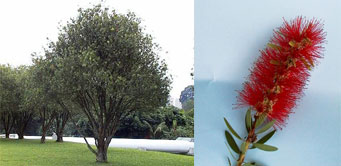
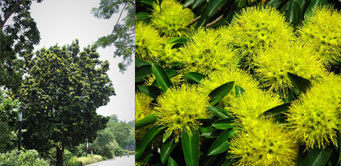
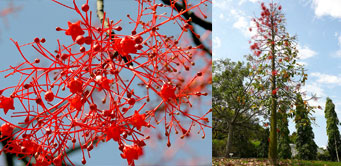
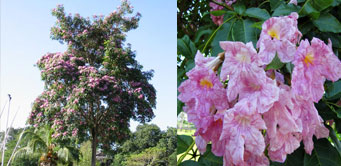
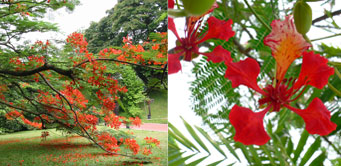
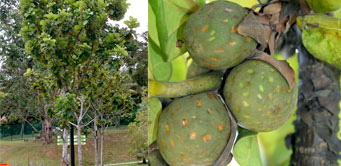
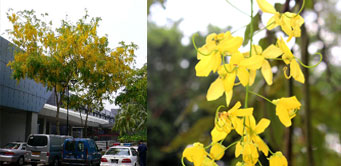
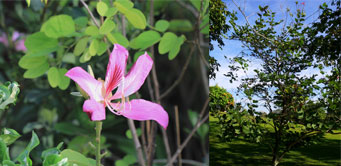



Have views or comments on this article? Let us know via this form. If you would like to give us feedback on any other areas relating to our parks and gardens, please submit via https://www.nparks.gov.sg/feedback